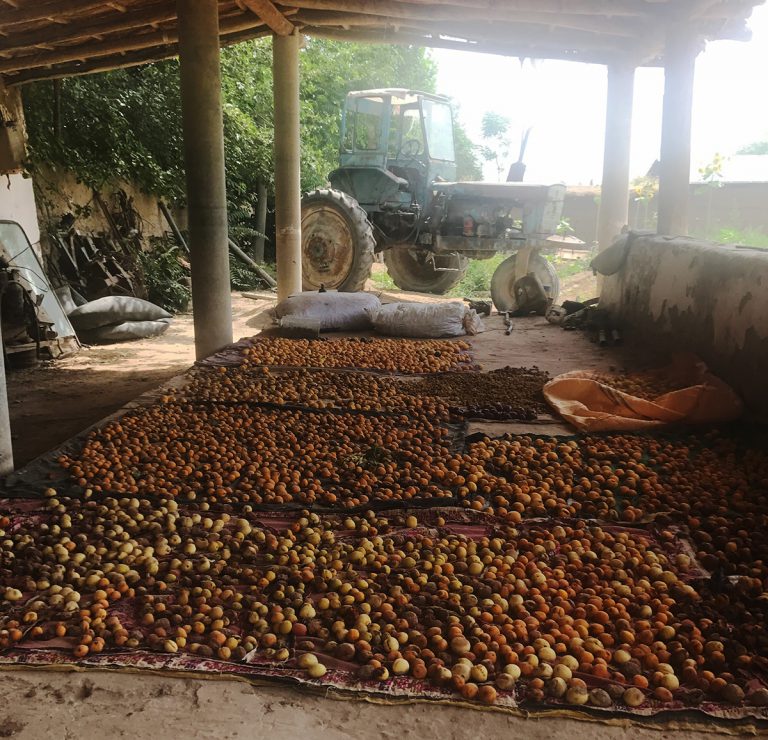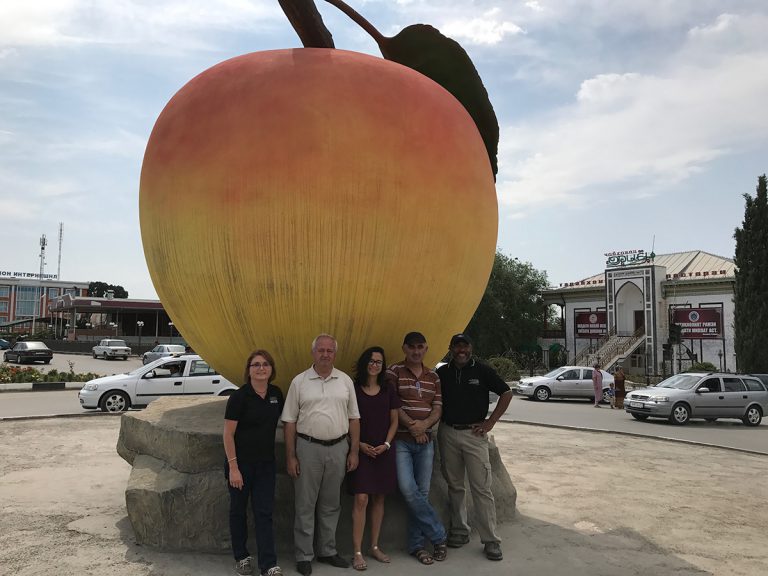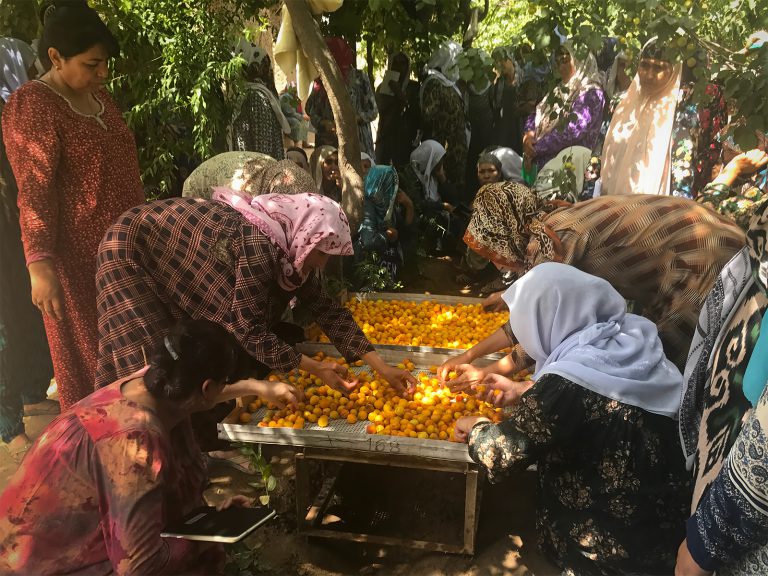
Apricots offer farmers in southern Tajikistan a profitable opportunity — particularly when dried for export to foreign markets.
In a region where 10 percent of the population lives on less than $1.25 per day, an international team led by U.S. scientists is digging into a new research project to help, advancing the science behind growing, drying, and selling these golden fruits.
Long history, new opportunities for apricot farmers in Tajikistan
Apricots have a long history in Tajikistan, as part of a region that is rich in apricot biodiversity (and potentially where the fruit originated). While apricots are grown widely across the country, farmers in northern Tajikistan in particular have well established commercial production and drying operations. More than 80 percent of Tajikistan’s dried apricots are exported to Russia, the world’s largest importer of dried fruit.
In 2015 a frost in northern Tajikistan presented southern farmers with a new opportunity. The frost prompted processors to look farther afield for apricots — including to farmers in the country’s southwestern Khatlon province, where the U.S. Agency for International Development is working to reduce poverty. (USAID notes that Tajikistan, on the northern border of Afghanistan, is a “linchpin for stability and security” for Central Asia.)
The Khatlon province in particular is part of the U.S. government’s Feed the Future strategy, as a key agricultural region with some of the highest rates of poverty and undernutrition in this post-conflict country. Farmers here grew cotton as part of a Soviet-era policy, but — following a civil war and increased access to land rights — have more recently returned to fruit and vegetable production. Thus horticultural production has been identified by USAID as a top priority for food security, with potential to boost rural incomes and improve household nutrition.

New international team advances science for better apricot drying
To advance USAID’s efforts with Tajik farmers, the Horticulture Innovation Lab — led by the University of California, Davis — is supporting a new research project that focuses on improving postharvest practices for dried apricots. The new $300,000 project is led by Purdue University researchers with an international team.
“We are proud to be able to connect American agricultural scientists with USAID team members who are already working in Tajikistan. This is a smart way to focus our investments in agricultural research,” said Erin McGuire, associate director of the Horticulture Innovation Lab at UC Davis. “Working together will result in better solutions that can be used by farmers more immediately.”
Leading the project is Peter Hirst, a horticulture professor at Purdue University and tree fruit extension specialist for farmers in Indiana. He recently served in Tajikistan with the Farmer-to-Farmer program, where he taught workshops for women farmers on grafting fruit trees, and also has experience working with orchards in Afghanistan and Kyrgyzstan.

On an introductory trip for this project, Hirst was impressed with the practices used by apricot farmers in the northern part of the country and with his new partners at Tajik Agrarian University.
“I was really encouraged. I saw tremendous potential and met a lot of good people wanting to advance their production practices,” Hirst said. “We’re really looking forward to continuing collaboration with the faculty members at the university. That kind of collaboration has the potential to pay off over a long period of time, with students and the agriculture industry benefiting for years.”
By working with TAU and also with the USAID-funded Feed the Future Tajikistan Agriculture and Water Activity project, the researchers can find more appropriate solutions and better share them with farmers and local industry.

Improving food safety, postharvest handling among women farmers
Connecting with women farmers will be especially important to the success of this project, as women predominate the labor force in the region’s fruit and vegetable fields.
“I’m so looking forward to working with the women we met,” said Purdue’s Amanda Deering, who recently returned from Tajikistan as the professor who will focus on microbial food safety. “They wanted to learn more. They said if someone would show us how to do it, we’ll do it. So I’m excited.”
Together with the project team, she will assess food safety challenges and quality parameters to develop educational materials that improve postharvest handling practices. The team has also started a market analysis to better understand commercial potential for apricot drying in southern Tajikistan.
The Purdue team’s next step is to test out four ways of drying apricots, first in Indiana and later with partners in Tajikistan — comparing traditional open-air drying against a low-cost “solar wrap” dryer, a multipurpose chamber dryer, and a chimney solar dryer.
“We don’t need to change the whole industry, but hopefully we can get the ball rolling,” Hirst said. “If we can change a few growers’ practices, then others will see their success and those changes can become self-sufficient.”
This project is supported by the Horticulture Innovation Lab with funding from the U.S. Agency for International Development, as part of the U.S. government’s global hunger and food security initiative called Feed the Future. Led by UC Davis, the Horticulture Innovation Lab builds international partnerships for fruit and vegetable research that improves livelihoods in developing countries. http://horticulture.ucdavis.edu/
More information:
- Project webpage: Improving practices for dried apricots in Tajikistan
- More project photos from Tajikistan
- More about USAID in Tajikistan: USAID/Tajikistan country profile and Feed the Future in Tajikistan
- Harvesting sweet success, article about USAID’s support of Tajik land rights and apricot orchards
- Genetic Resources of Apricots in Central Asia, article in HortScience June 2013
